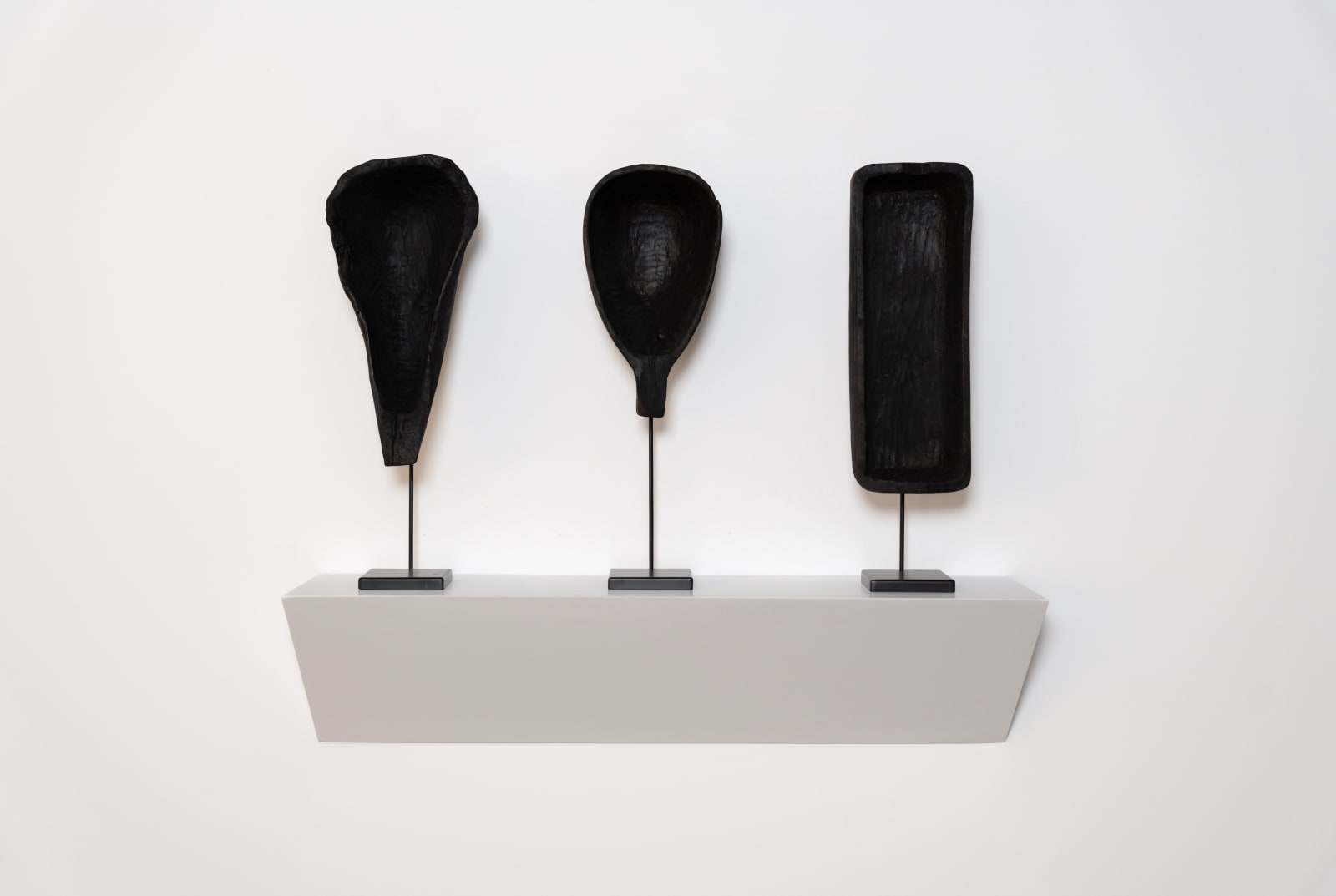
M’barek Bouhchichi Moroccan , b. 1975
Boussaadia, 2025
Charred Wood
75h x 111w x 24d cm
MB-000125
The legend of Boussaadia, referenced in Boussaadia (2025) and Saadia (2025), further touches on the experiences of displacement and othering that come with migration journeys. According to legend, Boussaadia [Father...
The legend of Boussaadia, referenced in Boussaadia (2025) and Saadia (2025), further touches on the experiences of displacement and othering that come with migration journeys. According to legend, Boussaadia [Father of Saadia] is a hunter from the Sahel whose daughter was kidnapped by slave raiders on their way north. He sets out on a journey across the desert to retrieve her. Weeks later, having arrived in Tunis exhausted and destitute, he resorts to begging in the streets while singing his sorrow. Boussaadia has become a tutelary figure in the Tunisian Stambeli tradition. A music-infused healing ritual based on spirit possession, Stambeli is mainly performed by descendants of displaced Sub-Saharan people organized into brotherhoods. Similar traditions are practiced across the Maghreb, such as Gnawa in Morocco or Diwan in Algeria. In Stambeli mythology, Boussaadia is both a wanderer and a guide, a figure around whom people gather. He is summoned as a medium into an esoteric world where Muslim saints and spirits from other African traditions manifest. Boussaadia (2025) consists of three hollow sculptures made of burnt wood, referencing different guembri shapes, as found in Morocco, Tunisia, and Mali. The guembri, a three-stringed, bass-sounding lute whose sacred sounds call in the spirits, is the main instrument of gnawa and stambeli ceremonies. Presiding over the rhythm and tonality of the performance, it conjures a repossession of the self and a gathering of the tribes. With its charred, hollowed-out guembris, Boussaadia insists on the process of dispersal and loss, evoking a longing for wholeness.